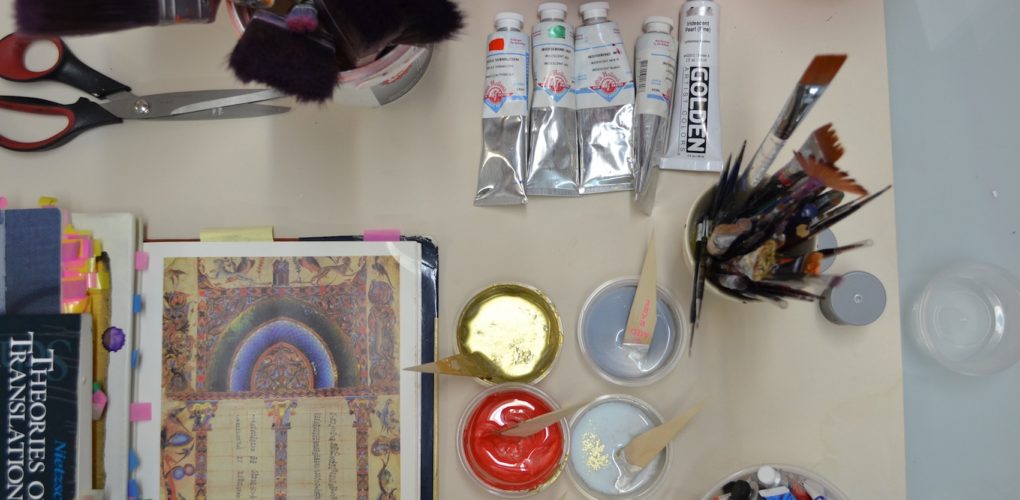The Others
 Meet The Others: Elefteria Vlavianos
Meet The Others: Elefteria Vlavianos
The Game Changers. The Rule Breakers. The Innovators. Discover some of the fantastic emerging talent showcasing their work at The Other Art Fair.
Sydney-based Fair Artist Elefteria Vlavianos describes her work as dealing with the relationship of cultural aesthetics and displacement and resettlement into a new environment. Taking inspiration from Barnett Newman, Yes Klein and Eva Hess, Elefteria notes that theoretical ideas and concepts relating to time are hugely significant to her large-scale paintings and the creativity behind them. In an interview at The Other Art Fair Sydney, Elefteria illuminates how she illustrates her traditional Armenian-cultural heritage in her contemporary abstract paintings.
How would you describe your artwork?
How would you describe your artwork?
I would describe my work as a abstract, concerned with the language of painting from an Armenian visual tradition. My work is both colourful and intricate. In these works I am interested in the vibration and re-articulation of a displaced cultural aesthetic and its imagery.
What is it like to be a part of The Other Art Fair?
Being part of The Other Art Fair was fantastic, because it gave me a profile and from showing the work in this event I was approached by a gallery (541 Art Space – Sydney) to have a solo exhibition. So exciting!!

What does making art mean to you?
EVERYTHING – art making – and specifically painting allows me to make that which is hidden visible again.
How did you get started making art?
I have painted since I could walk – My parents tried to discourage me, but I have always been obsessed with paint and colour. In addition I have always been interested in Artists, their practice and the idea of having a practice…I draw as much inspiration from my cultural influences as well as from artist such as Eve Hess, Arshile Gorky, Barnett Newman, Mark Rothko, etc.

How did you first come about to create the type of art you make now?
My work and practice is driven by two essential enquires. The first quest how…if at all…a cultural aesthetic can translate into a contemporary context after the impact of loss and displacement. The second question is driven by the materiality of paint, colour, marks and structure and questions how these elements can make that, which is displaced, lost or hidden visual again. Together these question questions how painting facilitates the translation of a particular cultural aesthetic.







